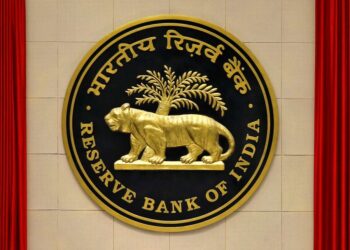Every August, the Reserve Bank of India evaluates various banks based on their operations and outreach to create a list of India’s most significant banks. The Reserve Bank of India (RBI) has conducted this process annually since 2015 to closely monitor the banks in India’s financial system.
Currently, the list of the safest banks in India includes only three financial institutions. RBI has identified one public bank (State Bank of India) and two commercial banks (ICICI Bank and HDFC) as Domestic Systemically Important Banks (D-SIBs).
These banks are observed to be important to the country’s financial health, and their failure could be catastrophic. In the same context, the government is prepared to support these banks if ever required.
But how does RBI determine if a bank is safe or not? Let’s find out!
How does RBI determine the safest banks in India?
RBI mandates banks and financial institutions to meet the regulatory requirements and maintain a fixed percentage of capital to risk-weighted asset ratio (CRAR) as tier-I equity.
The capital adequacy ratio (CAR) or CRAR refers to the proportion of a bank’s capital to its risk. The ratio also indicates the amount of money a bank has set aside in its reserve to cover potential loan losses. A higher CAR indicates that a bank is better equipped with capital to address any financial challenges that may arise.
To determine a specific bank’s CAR (capital adequacy ratio), its capital is divided by its risk-weighted assets (two tiers) – tier-1 and tier-2.
Tier-1 capital, or core capital, ordinary share capital comprises intangible assets, equity capital, and audited revenue reserves. Tier-2 capital, on the other hand, consists of unaudited reserves, unaudited retained earnings, and general loss reserves.
As per the regulations, banks are required to keep a fixed percentage of their risk-adjusted assets as tier-1 equity. The Reserve Bank of India (RBI) has instructed the State Bank of India (SBI) to maintain 0.60% of its assets as tier-1 equity, while HDFC and ICICI banks are mandated to maintain 0.20% of their reserved assets as tier-1 equity.
The concept of risk-weighted assets pertains to calculating a bank’s overall financial risk by multiplying its loans and other assets with a percentage factor based on their associated level of risk. Different asset categories are used by banks, including cash, debentures, and bonds, each of which carries a varying degree of risk. The risk weight assigned to each asset category is based on the likelihood of the asset losing its value. For example, debentures carry a higher risk weight than low-risk options such as cash, government securities, or bonds.
Conclusion
The Reserve Bank of India’s criteria and recommendations for identifying the safest banks in India provide valuable guidance to consumers in making informed decisions about where to entrust their funds. By carefully evaluating a bank’s financial strength, asset quality, and governance standards, you can mitigate the risks associated with banking and safeguard your financial future. Additionally, it’s essential to stay informed about any updates to the RBI’s recommendations and to monitor your accounts regularly to detect any suspicious activity.








